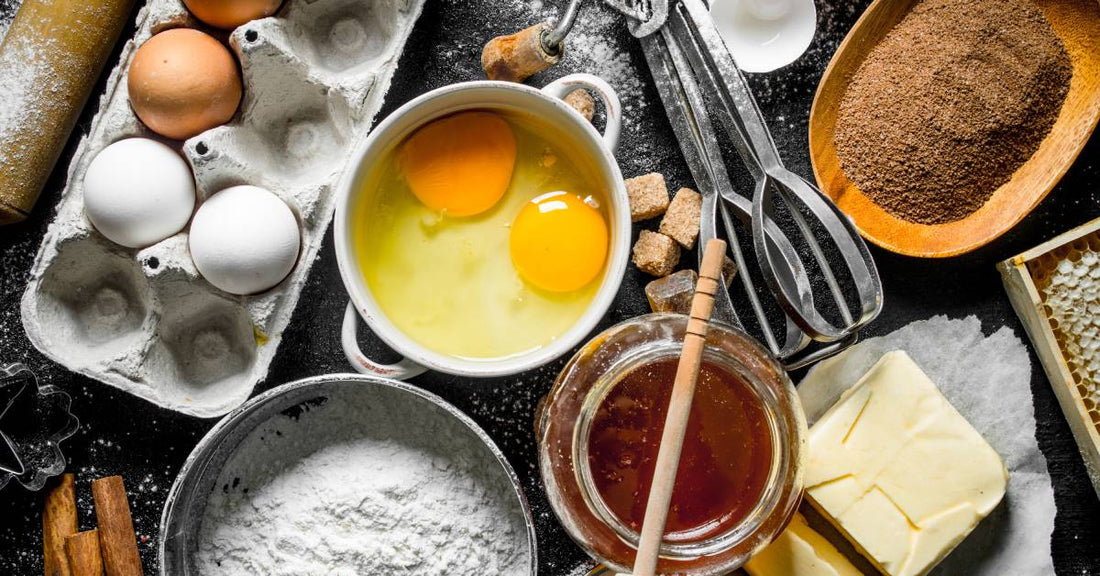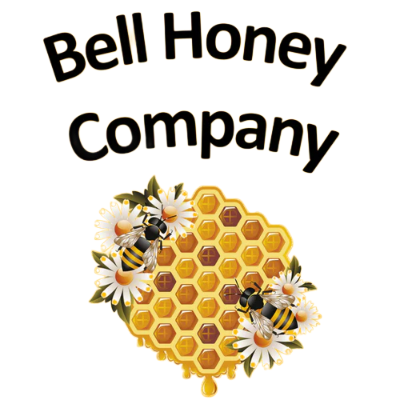
9 Tips for Using Honey as a Sugar Replacement in Baked Goods
Share
When it comes to baking, sugar is a baking staple. Of course, some people would prefer less sugar in their diet, or none. Other times, you may find yourself running short on sugar and needing a worthy substitute.
So what if you could swap out that standard processed white sugar for something more natural and nutritious yet equally delicious? Enter honey, a versatile and natural sweetener that enhances your baked goods while providing other benefits. In this post, we’ll explore nine tips for using honey as a sugar replacement in baked goods. And don’t be skittish. We’ll provide tactics and applications that blend in well without causing a shock to your cooking system!

Honey Over Sugar
Replace sugar with honey? Sounds reckless and maybe a little chancy, right? Not if it’s done right! Honey, of course, is already composed of natural sugars, though these aren’t exactly the same as those found in your average bag of processed white sugar. Honey’s sugars still contain many substances that become screened out when sugar cane and beets are subjected to processing. Here are some of the reasons why honey is a worthy substitute for white sugar in many cases:
- Natural sweetener: Unlike refined sugar, honey is a natural product that contains no additives. Raw honey has just what it received in the hive, with no preservatives, additives, or extra sweeteners.
- Health benefits: Honey contains plenty of antioxidants and has natural antibacterial properties. That’s why honey has been used for centuries for food, first aid, and more.
- Flavor: Nothing really tastes like honey, and honey comes in all sorts of flavors depending on its source of nectar. Honey adds a unique flavor profile to baked goods, ranging from floral to fruity, depending on the type.
- Moisture: Honey retains moisture better than sugar, resulting in softer and moister baked goods.
General Tips for Substituting Sugar With Honey
Before you start adding honey to your baked goods, get a feel for the basics of substitution. Sugar is a grainy solid. It can be melted or dissolved into a more liquid form or syrup, depending on the recipe. On the other hand, honey is already a thick liquid, and it’s sweeter than sugar, believe it or not. Therefore, you need to consider how much sweetness you want to add to a dish. Moreover, honey’s liquidity may affect the final product’s texture and alter the baking time. Keep the following rules of thumb in mind when substituting honey for sugar in any baked good.
Use Less Honey
Honey’s extra sweetness means you may need to use less honey than sugar. In practice, consider using 3/4 of a cup of honey for every cup of sugar the recipe requires.
Reduce Liquidity
Honey adds moisture. That can be a good thing or a bad thing, depending on the recipe. Adding honey might require reducing the amount of other liquids in a recipe. For every cup of honey, reduce other liquids by a quarter cup. Otherwise, your baked goods may become a bit soggy.
Adjust Baking Temperatures
Sugar browns when it gets hot, and honey browns even faster. Reduce baking temperatures by 25°F to prevent scorching that could lead to unattractive baked goods that may taste bad as well.
More Specific Tips for Baking With Honey
The above tips apply to almost any recipe where honey substitutes for sugar. Here are a few more smart and specific honey baking tips.
Choose the Right Type
You may be familiar with processed store-bought honey, which is usually golden brown and available in a bear-shaped container. But there’s a wide spectrum of honeys out there.
As mentioned, the flavor, color, and other aspects of honey depend on the types of flowers and plants that the bees harvested. Lighter honeys, like clover and acacia, are milder and are great for baked goods that require a more subtle sweetness. Darker honeys, like buckwheat and manuka, have a more potent flavor and are great in robust recipes for bread, muffins, and heavier goods. Experiment!

Mind Your Measurements
One thing sugar has going for it is its granularity, allowing for accurate measurements and easy addition to recipes. Conversely, honey is sticky as all get out, and adding a cup of honey to a recipe may result in delivering less than a full cup.
Ensure you get the exact amount by spraying the interior of the measuring cup or spoon or other container with a nonstick cooking spray before filling it with honey. The honey will slide out more easily and provide the correct amount. Use a flavorless spray or oil, of course.
Balance the Flavor
If the honey flavor is too strong for you, balance it by doing a taste test and adding salt, vanilla extract, or similar additions. Doing so can round out the sweetness, moderate the flavor, or complement the honey’s unique tang.
Tick Tock!
Mind your baking times. As mentioned, honey scorches and browns easily. Watch your baked goods as they bake, and check for doneness several minutes before the time listed in the recipe.
Do the classic toothpick test. Poke the baked good and see if it comes out clean. If not, leave it in a little while longer.
Neutralize Acidity
Honey is slightly acidic. This can affect the leavening agents in the recipe and prevent rising. Counteract it with a pinch or so of baking soda to neutralize excessive acidity. Adding 1/4 teaspoon of baking soda per cup of honey is a good yardstick. Your baked goods should rise beautifully then.
Store It Properly
Honey has the remarkable property of staying good for centuries. In fact, honey recovered from Egyptian tombs could still be heated up and eaten! Even so, remember that honey-based baked goods will stay moist for far longer than sugar-based recipes.
Therefore, store honey-sweetened treats in airtight containers or under plastic wrap at room temperature to ensure freshness. If you plan to freeze them, wrap them extra tightly in plastic wrap or a sealable plastic bag before storing them away.
Be a Honey Scientist!
Those are just nine tips for using honey as a sugar replacement in baked goods. In general, however, trial and error are the best teachers when it comes to figuring out the best honey-based recipes. Experiment to see how well honey works in your recipes!
Need some other tips and honey suggestions? We’re long-time honey producers! Contact us for a consultation about our products and how they add flair and flavor to your favorite baked goods recipes.
